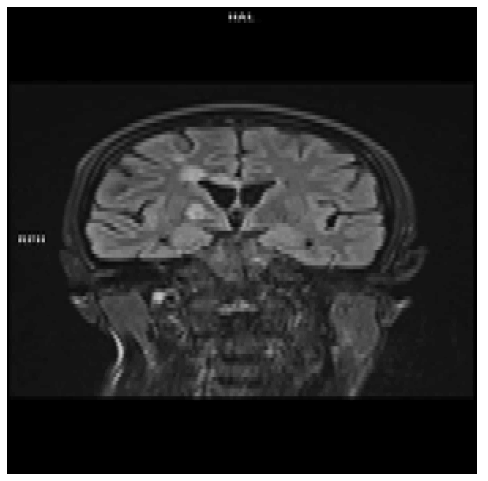Image Article - Clinical Investigation (2023) Volume 13, Issue 3
COMPLEX WATERSHED INFARCTIONS: CLINICAL IMAGE
- Corresponding Author:
- Dusan J. Petrovic
Department of Diagnostic Imaging, Center of Radiology and MRI, University Clinical Center, Belgrade, Serbia
E-mail: dusanpetrovic736@gmail.com
Received: 03-March-2023, Manuscript No. fmci-23-92801; Editor assigned: 13-March-2023, Pre-QC No. fmci-23-92801 (PQ); Reviewed: 14-March-2023, QC No. fmci-23-92801 (Q); Revised: 16-March-2023, Manuscript No. fmci-23-92801 (R); Published: 30- March -2023; DOI: 10.37532/2041-6792.2023.13(3) 395
Abstract
FLAIR sequence MRI endocranial image showing both cortical-external and subcortical -internal hyper intensity confluent focal fields corresponding to components of complex unilateral right watershed infarctions (coronal section) - multi-infarct changes located in the right parietooccipital, right frontal, and parietal lobe, right capsule thalamic tract, and in the corpus callosum (both splenium and genu) as part of
the so-called complex watershed cerebral infarcts. A 55-year-old female subject was sent in an urgent ambulance to Urgent Medicine, Neuroradiology Department suspected of clinical signs of left-sided weakness, both left-sided hand and leg weakness, with hard walking and quite difficult communication, that occurred approximately a few days (3-4 days) before hospital administration. As watershed infarction
very often represents an arduous radiological diagnostically dilemma and considering that particularly internal border zone infarcts which are located between the anterior and middle cerebral perforating arteries (deep and superficial branches) have a high proclivity for future cerebrovascular incidents and morbidity due to minor chance of developing adequate collateral supply, prompt recognition and complex
therapy (pharmacology, interventional radiology, and surgery, etc.) in order to decrease irrevocable ischemic lesions is very important and radiologists should be aware of these types of ischemic lesions because they can be present in up to 10% of all brain infarcts for reference go through Figure 1.



